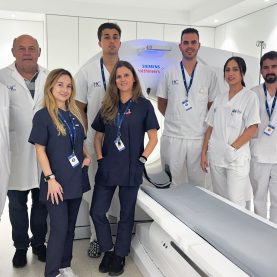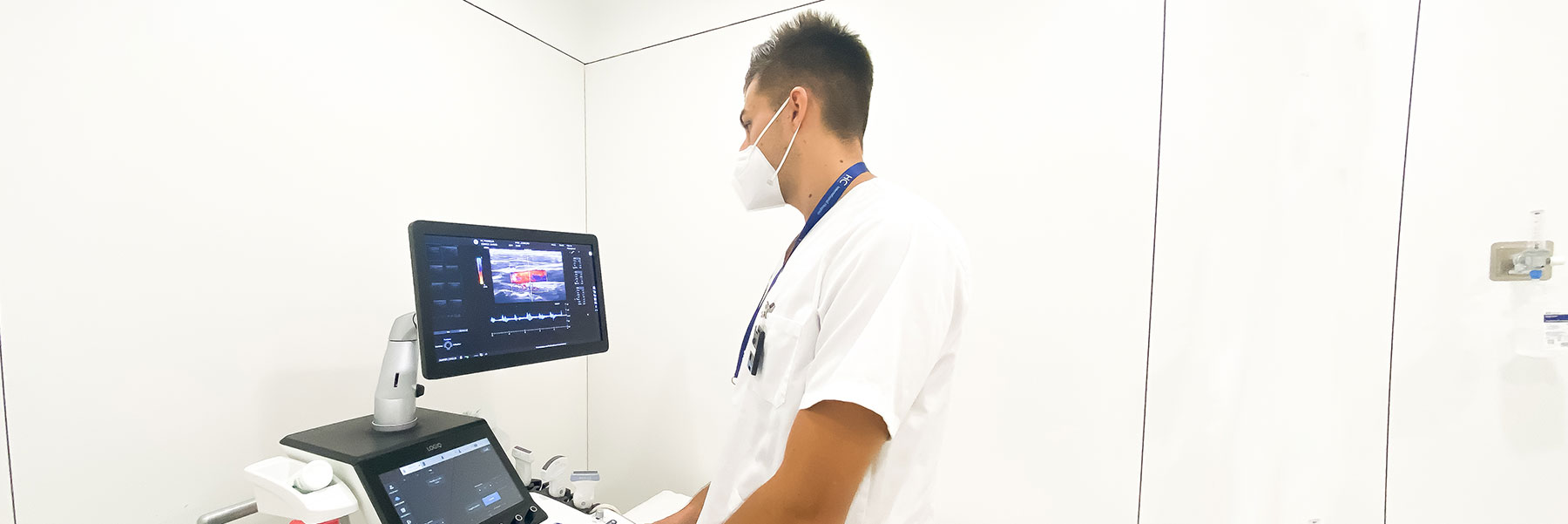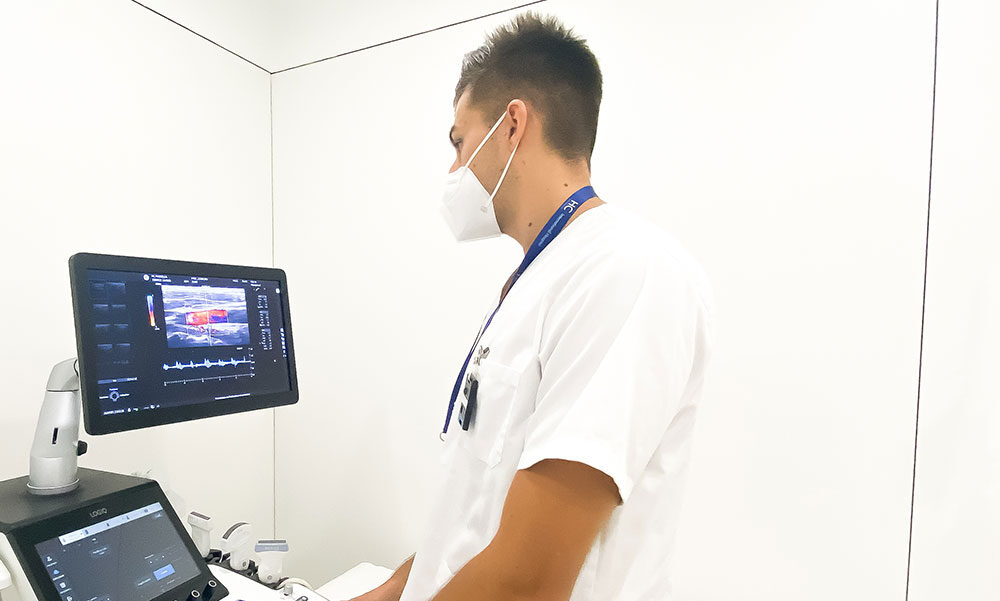
AI in Diagnostic Radiology: Going the extra mile to offer you the best.


HC has several ultrasound machines designed for different uses.
We employ the latest innovations in technology to offer imaging of exceptional quality, with greater colour sensitivity and advanced imaging modes.

Ultrasound is a diagnostic imaging technique which uses high-frequency sound waves to obtain images from within the body, different tissues reflect sound waves in varying ways, according (approximately) to their fluid content.
Due to what is known as the “Doppler effect,” information can also be obtained about the velocity and movement of blood.
As the images are captured in real time, they can display the structure and movement of internal body organs, as well as the blood flowing through vessels.
It is a simple, rapid and effective diagnostic method for the patient.
There are only two requirements:
The main advantage of ultrasound is that it does not use radiation, it is completely harmless for the patient. It continues to be an essential first-line treatment in many fields of conventional radiology. As a result of the physics principles on which it is based, it does have limitations in respect of the images obtained, it may need to be complemented by other techniques.
Ultrasound can be used to examine many areas of the body including: the abdomen, urinary tract, pelvis, breasts, muscles and tendons, neck, thyroid, testicles and prostate.
It is especially recommended in women with dense breasts, in whom mammography is not as effective, as it helps to determine whether nodules are solid or liquid.
As well as visualising and characterising abnormalities, it can be used as a guide to obtain a biopsy, or as a guide for fine needle aspiration (FNA) of abnormalities found during an investigation.


Examines:










A complete study of the heart providing the following information:

A manual probe called a transducer is moved directly on the skin over the area which must be viewed. To facilitate the transmission of sound waves, a clear water-based gel conductor is applied to the area.
At times you will be asked to breathe in a certain way.
During some investigations, such as transvaginal ultrasound or ultrasound of the prostate, a specific probe is inserted.
The following is advised:
Sorry, this entry is only available in Español.
Sorry, this entry is only available in Español.
El impacto de la IA en el radiodiagnóstico. Entrevista con Enrique Cano en RTV Marbella
Cano Iglesias, Enrique
Especialista en Radiofísica Hospitalaria
Rebollo García, Natividad
HC Marbella Radiology Specialist
García Baltar, José Antonio
Especialista en Radiofísica Hospitalaria
De Castro, Francisco Javier
Medical specialist in Radiology and Internal Medicine
Bellinvia, Anna Alessandra
HC Marbella Radiology Specialist
Villar Luque, Luis
Especialista en Medicina Nuclear
Rivera Sánchez, Ernesto
HC Marbella Radiology Specialist
Briones, Luis
HC Marbella Radiology Specialist
Urbaneja Salas, Alberto
Specialist in Interventional Radiology
Rueda Galiano, Mª Isabel
Senior Technician in Diagnostic Imaging
Tel.: +34 952 908 628
+34 609 148 799
952908898 Oncology
951829978 Diagnosis by imaging
951829947 Gynecology
952908897 Fertility
951829947 Physiotherapy



